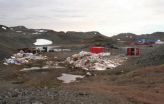(Press-News.org) The federal government invested more than $25 billion in health information technology (IT) as a result of the American Reinvestment and Recovery Act; yet, little is known about how IT applications improve patient safety and protect their privacy. Now, a University of Missouri nursing informatics expert suggests that sophisticated IT leads to more robust and integrated communication strategies among clinical staff, which allows staff to more efficiently coordinate care and better protect patient privacy.
Greg Alexander, an associate professor in the MU Sinclair School of Nursing, found that practitioners use IT to help make clinical decisions, electronically track patients' care and securely relay medical information. Conversely, staff members in nursing homes with less IT use verbal means or visual cues to identify patients' needs at central locations such as nursing stations, on patients' doorways or in closets.
"In nursing homes that have technology, much of the information is kept close to the patient and communication occurs more often at the bedside rather than at nursing stations, which is ideal," Alexander said. "Staff without IT rely on more creative ways to communicate, such as posting a photo of a water droplet on patients' doors to indicate the patients need to be hydrated. This may create issues for privacy and leaves room for misinterpretation among staff."
Alexander also found that face-to-face communication among staff decreased in nursing homes with more IT. Future research will determine how this decreased face-to-face communication affects clinical workflow, staff relationships and quality of patient care, he said.
"The electronic system provides a means of tracking patients' needs and assuring that work is done, but it can't completely replace face-to-face interactions," Alexander said. "Technology is a tool that supports the delivery of care, but it doesn't replace it."
Alexander is the co-principal investigator on a $14.8 million grant from the U.S. Department of Health and Human Services Centers for Medicare and Medicaid Services meant to reduce avoidable re-hospitalizations among nursing home residents. One goal of the project is to enhance staff communication through technology and better information exchange.
###
Alexander's most recent study, "Case studies of IT sophistication in nursing homes: A mixed method approach to examine communication strategies about pressure ulcer prevention practices," was published in the International Journal of Industrial Ergonomics. Alexander's coauthors included Linsey Steege, an assistant professor of industrial and manufacturing systems engineering in the MU College of Engineering; Kalyan Pasupathy, an assistant professor of health management and informatics in the MU School of Medicine; and Keely Wise, a research associate in the MU Sinclair School of Nursing.
Information Technology improves patient care and increases privacy, MU informatics expert says
2013-02-07
ELSE PRESS RELEASES FROM THIS DATE:
Waste dump at the end of the world
2013-02-07
This press release is available in German.
(Jena) On their mission to the moon in 1969 the Americans Neil Armstrong and Buzz Aldrin created arguably the most famous footprints ever. Since the time the astronauts of the Apollo 11 Mission stepped onto the surface of our satellite their footprints remain almost unchanged. And as no breath of wind will ever be able to blow them away they will be visible forever.
Not quite so old but equally 'immortal' are many traces that have been left behind by humans at the South Pole of the Earth. This is the result of a report ...
Lancet Oncology: Long-term side-effects of targeted therapies in pediatric cancer patients
2013-02-07
A University of Colorado Cancer Center review published this week in the journal Lancet Oncology describes possible long-term side-effects of new, targeted therapies in pediatric cancer patients: what we don't know may hurt us.
"As pediatricians who treat kids with cancer, we expect the side-effects of traditional chemotherapies: low white blood count, infections, even long-term heart trouble or infertility. But there's the impression that these new, molecularly targeted agents are much less toxic. That may be true, especially in adult patients, but until we have more ...
Poll: Americans back climate change regulation, not taxes
2013-02-07
DURHAM, N.C. -- Now that President Obama has put climate change back on the table in his second inaugural address, a new national poll finds growing public support for regulating greenhouse gas emissions and requiring utilities to switch to lower-carbon fuel sources.
The percentage of Americans who think climate change is occurring has rebounded, according to the Duke University national online survey, and is at its highest level since 2006. The study also finds that while Americans support regulating greenhouse gas emissions, they do not favor market-based approaches ...
Scientists discover how the world's saltiest pond gets its salt
2013-02-07
VIDEO:
Antarctica's Don Juan Pond, the world's saltiest body of water, needs its salt to keep from freezing into oblivion. Scientists had assumed that the saltwater brine that sustains the pond...
Click here for more information.
PROVIDENCE, R.I. [Brown University] — Antarctica's Don Juan Pond might be the unlikeliest body of water on Earth. Situated in the frigid McMurdo Dry Valleys, only the pond's high salt content — by far the highest of any body of water on the planet — ...
Subcortical damage is 'primary cause' of neurological deficits after 'awake craniotomy'
2013-02-07
Philadelphia, Pa. (February 7, 2013) – Injury to the subcortical structures of the inner brain is a major contributor to worsening neurological abnormalities after "awake craniotomy" for brain tumors, reports a study in the February issue of Neurosurgery, official journal of the Congress of Neurological Surgeons. The journal is published by Lippincott Williams & Wilkins, a part of Wolters Kluwer Health.
During a procedure intended to protect critical functional areas in the outer brain (cortex), damage to subcortical areas—which may be detectable on MRI scans—is a major ...
No increase in brain aneurysm rupture risk during pregnancy and delivery
2013-02-07
Philadelphia, Pa. (February 7, 2013) – For women with aneurysms involving the brain blood vessels, pregnancy and delivery don't appear to increase the risk of aneurysm rupture, reports a paper in the February issue of Neurosurgery, official journal of the Congress of Neurological Surgeons. The journal is published by Lippincott Williams & Wilkins, a part of Wolters Kluwer Health.
The study also finds that women with known, unruptured aneurysms have a very high rate of cesarean delivery—which isn't supported by evidence and "may not be necessary," according to Dr. Brian ...
NASA sees the sun produce 2 CMEs
2013-02-07
In the evening of Feb. 5, 2013, the sun erupted with two coronal mass ejections or CMEs that may glance near-Earth space. Experimental NASA research models, based on observations from the Solar Terrestrial Relations Observatory (STEREO) and ESA/NASA's Solar and Heliospheric Observatory, show that the first CME began at 7 p.m. EST and left the sun at speeds of around 750 miles per second. The second CME began at 10:36 p.m. EST and left the sun at speeds of around 350 miles per second. Historically, CMEs of this speed and direction have been benign.
Not to be confused with ...
Animal magnetism: First evidence that magnetism helps salmon find home
2013-02-07
When migrating, sockeye salmon typically swim up to 4,000 miles into the ocean and then, years later, navigate back to the upstream reaches of the rivers in which they were born to spawn their young. Scientists, the fishing community and lay people have long wondered how salmon find their way to their home rivers over such epic distances.
How do they do that?
A new study, published in this week's issue of Current Biology and partly funded by the National Science Foundation, suggests that salmon find their home rivers by sensing the rivers' unique magnetic signature. ...
NASA scientists build first-ever wide-field X-ray imager
2013-02-07
Three NASA scientists teamed up to develop and demonstrate NASA's first wide-field-of-view soft X-ray camera for studying "charge exchange," a poorly understood phenomenon that occurs when the solar wind collides with Earth's exosphere and neutral gas in interplanetary space.
The unique collaboration involved heliophysics, astrophysics and planetary science divisions at NASA's Goddard Space Flight Center in Greenbelt, Md., and resulted in the first successful demonstration of the Sheath Transport Observer for the Redistribution of Mass (STORM) instrument and a never-before-flown ...
Same factors influence depression in stroke patients, spouse caregivers
2013-02-07
Self-esteem, optimism and perceived control influence depression in stroke survivors and their spouse caregivers — who should be treated together, according to research presented at the American Stroke Association's International Stroke Conference 2013.
Researchers, who analyzed 112 depressed stroke survivors up to 8 weeks after hospital discharge and their spouses, found self-esteem and optimism influenced each partners' depression.
"We usually have been focused on the outcome of the stroke survivor, but we found that the self-esteem and optimism of the spouse caretaker ...



